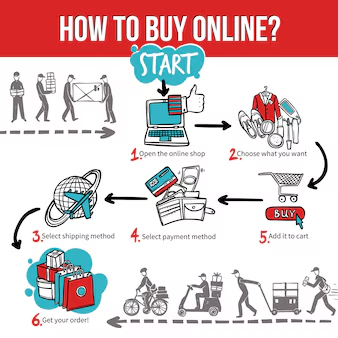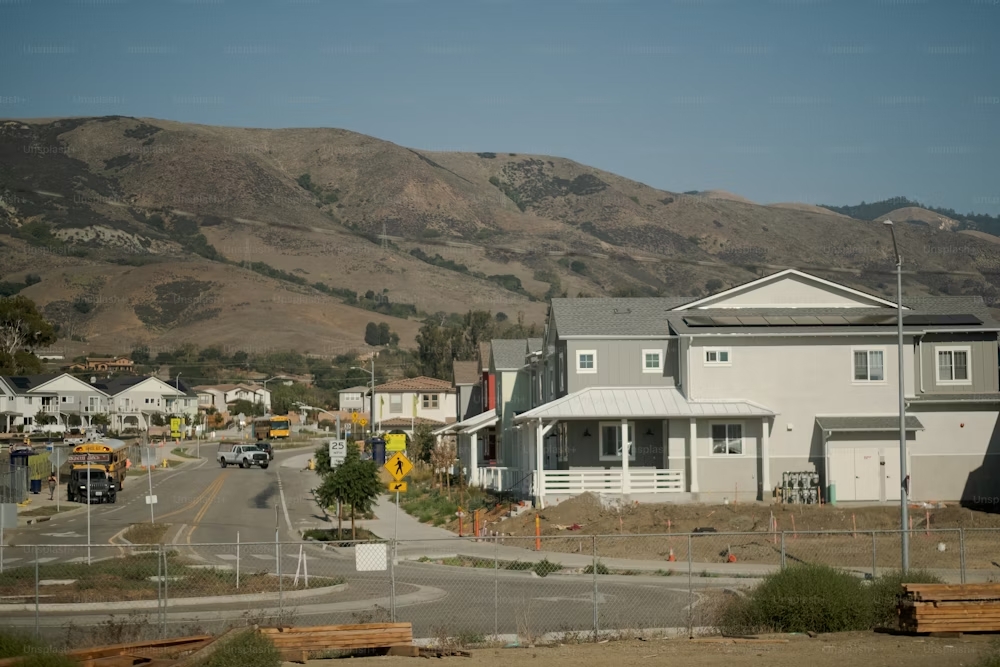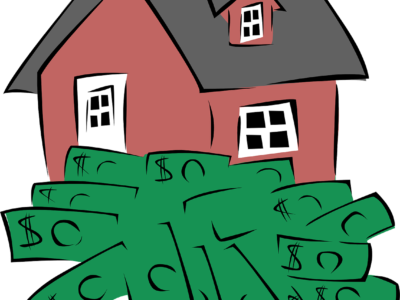
Are you looking for a great deal on a property in the UK? Buying a repossessed property can be an excellent option to consider. Repossessed properties are homes that have been taken back by lenders from previous owners who couldn’t keep up with their mortgage payments. These properties are often sold at a discounted price, making them attractive to prospective buyers.
However, the process of buying a repossessed property can be a bit different from purchasing a regular home. There are certain steps you need to follow to navigate this unique real estate market successfully.
In this article, we will guide you through the process of buying a repossessed property in the UK. We will cover everything from finding repossessed properties to bidding on them and completing the purchase. Whether you are a first-time buyer or an experienced real estate investor, our step-by-step guide will provide you with all the information you need to make an informed decision.
So, if you are ready to explore the world of repossessed properties and secure a great deal, let’s get started!
- What is a Repossessed Property?
- Benefits of Buying a Repossessed Property
- Understanding the Process of Buying a Repossessed Property
- 1. Researching and Finding Repossessed Properties for Sale
- 2. Assessing the Condition of a Repossessed Property
- 3. Financing Options for Buying a Repossessed Property
- 4. Making an Offer and Negotiating the Price
- 5. Legal Considerations When Buying a Repossessed Property
- 6. Completing the Purchase and Taking Possession of the Property
- Conclusion: Is Buying a Repossessed Property Right for You?
What is a Repossessed Property?
A repossessed property is a home that has been taken back by a lender, usually a bank, from the previous owner due to default on mortgage payment. When a homeowner fails to make their mortgage payments, the lender has the right to repossess the property and sell it to recover the outstanding debt. These properties are often sold at a discounted price to attract buyers quickly.
Repossessed properties come in various forms, including houses, apartments, and commercial real estate. You will find them in both urban and rural areas across the UK. It’s important to note that buying a repossessed property is not the same as buying from a regular home seller. Buying a repossessed real estate requires you to follow a different process and considerations, which we will explore in detail throughout this article.
Benefits of Buying a Repossessed Property
One of the key benefits of buying a repossessed property is the potential for substantial savings. These properties are often sold at a discounted price compared to similar properties in the real estate market. Lenders are motivated to sell repossessed properties quickly to recover their money, which can create opportunities for buyers to secure a great deal.
Besides, buying a repossessed property offers you a faster purchase process. Since the lender is the seller, there are no chains involved, which means you don’t have to wait for other buyers or sellers to complete their transactions. This streamlines the buying process and allows you to move into your new property sooner.
Additionally, buying property that has been repossessed presents you with opportunities for renovation and home improvement. Some properties may require repairs and aesthetics updates, but with the right vision and budget, you can transform a repossessed property into your dream home or a profitable investment.
Understanding the Process of Buying a Repossessed Property
Buying a repossessed property involves a series of steps that differ from buying a regular home. It’s essential to understand these steps to navigate the process successfully.
Let’s explore each step in detail.
1. Researching and Finding Repossessed Properties for Sale
The first step in buying a repossessed property is to conduct thorough research to find available properties. You can start by checking online platforms that specialize in real estate listings, especially for repossessed properties. Alternatively, you can search online for “repossessed houses for sale near me.” Online platforms provide detailed information about the properties, including their location, size, condition, and asking price.
It’s important to keep in mind that not every repossessed property in the uk is publicly listed. Some lenders may work with specific real estate agents or auction houses to sell their repossessed properties. Thus, it’s a good idea to contact local real estate agents or real estate brokerages or attend property auctions in your area to discover additional opportunities.
Once you find a potential property, gather as much information as possible. This includes reviewing the property descriptions, examining photos, and if available, conducting virtual or physical viewings.
2. Assessing the Condition of a Repossessed Property
When buying a repossessed property in the UK, it’s essential to assess its condition thoroughly. Repossessed properties may have been neglected or poorly maintained by the previous owners, so it’s crucial to be aware of any potential issues or repairs that these properties may need.
During the viewing process, pay attention to structural issues such as cracks, dampness, or signs of damage. Look for any visible repairs that may have been attempted but not completed. It’s also important to inspect the plumbing, electrical systems, or the overall functionality of the property.
If you find it difficult to assess the condition of the property by yourself, consider hiring a professional surveyor or architect to conduct the inspection. They will provide you with a detailed report outlining any potential issues and estimated costs for repairs or renovations. This information will help you make an informed decision and negotiate the price accordingly.
3. Financing Options for Buying a Repossessed Property
Once you’ve identified a repossessed property that meets your requirements, it’s time to consider your financing options. It’s important to have your finances in order before making an offer on a repossessed property. This will quicken the process.
If you plan to purchase the property with cash, ensure that you have the necessary funds readily available. If you opt for mortgage financing, it’s advisable to obtain a mortgage agreement in principle from a lender before making an offer. This will demonstrate to the seller that you’re a serious buyer and can expedite the purchase process.
Keep in mind that some lenders may have specific requirements or restrictions when it comes to financing a repossessed property. It’s crucial to consult with a mortgage advisor or financial professional who specializes in this area to ensure you’re aware of any potential considerations or limitations.
4. Making an Offer and Negotiating the Price
When making an offer on a repossessed property, it’s important to approach the negotiation process strategically. Start by researching the local market and comparable properties to determine the fair market value of the property you’re interested in.
Most repossessed properties are sold through real estate agents or auction houses, so you will need to submit your offer through them. Keep in mind that the seller’s priority is to recover their money, so they may be more inclined to accept offers close to the asking price.
However, don’t be afraid to negotiate. If you’ve identified any significant issues or repairs that need to be addressed, use this information to support your case and negotiate a lower price. Be prepared for potential counteroffers, and remember to stay within your budget and financial limits.
5. Legal Considerations When Buying a Repossessed Property
Before you finalize the purchase of a repossessed property, it’s crucial to seek legal advice to ensure a smooth and secure transaction. Consider engaging a real estate attorney or conveyancer experienced in dealing with repossessed properties.
A real estate lawyer will conduct necessary searches and checks to ensure that there are no legal or financial issues associated with the property. They will also review the terms of sale and any special conditions that may apply to repossessed properties. It’s important to fully understand your rights and obligations as a buyer to protect your interests.
Moreover, your attorney will handle the necessary paperwork, including the exchange of contracts and the completion of the purchase. They will liaise with the lender to ensure that all necessary legal requirements are met.
6. Completing the Purchase and Taking Possession of the Property
Once all legal requirements are met, and the sale is finalized, it’s time to complete the purchase and take possession of the repossessed property. This involves transferring the funds to the seller’s solicitor and receiving the keys to the house.
Before taking possession, it’s advisable to conduct a final walkthrough of the property to ensure that it’s in the agreed-upon condition. This will allow you to identify and last-minute issues or unexpected changes since your initial assessment.
It’s also important to arrange appropriate insurance coverage for the property before taking possession. As the new owner, it’s your responsibility to protect your investment against potential risks.
Conclusion: Is Buying a Repossessed Property Right for You?
Buying a repossessed property comes with significant advantages, including potential savings, a faster home purchase process, and opportunities for renovations or investment. However, it’s crucial to conduct thorough research to stay safe from the risks that come with the purchase of repossessed properties.
Understand the steps involved in buying a repossessed property, from finding available properties to completing the purchase. This will help you reach an informed purchase decision. By following the steps outlined in this guide and seeking professional advice when needed, you can navigate the repossessed property market successfully and secure a great real estate deal. Remember, each repossessed property is unique, and it’s important to assess the condition, consider your financing options, negotiate the price, and seek legal advice before finalizing the purchase. With proper research, due diligence, and careful consideration, buying a repossessed property in the UK can be a rewarding and worthwhile investment. So, start exploring the market, and who knows, you may find your dream home at an unbeatable price!











Thanks for sharing. I read many of your blog posts, cool, your blog is very good.